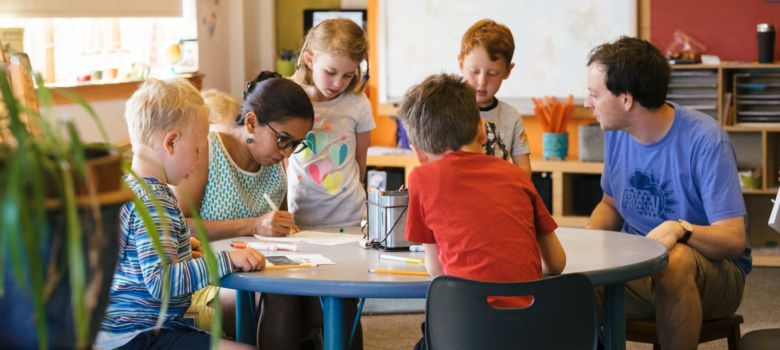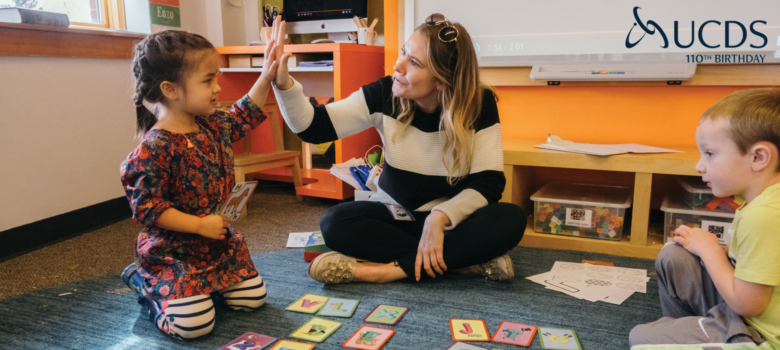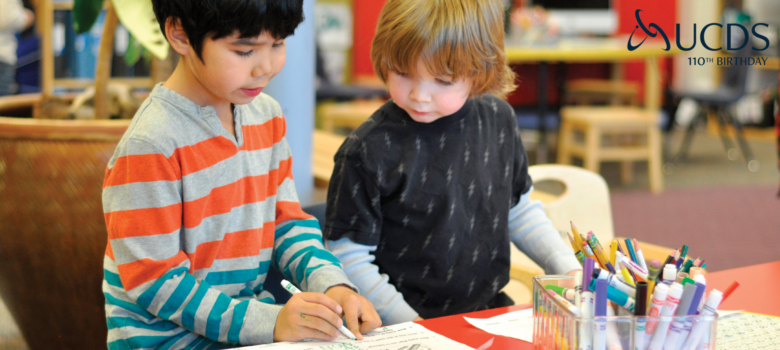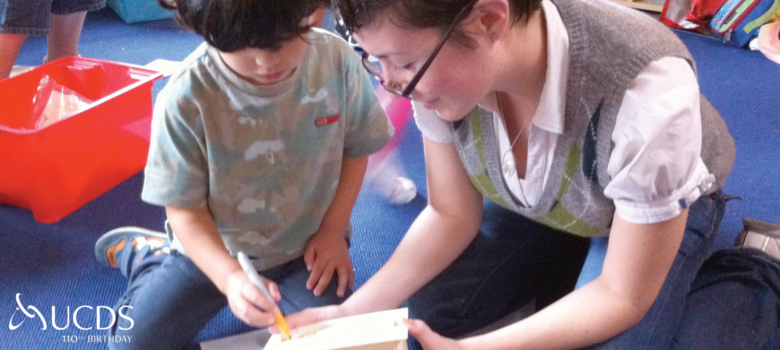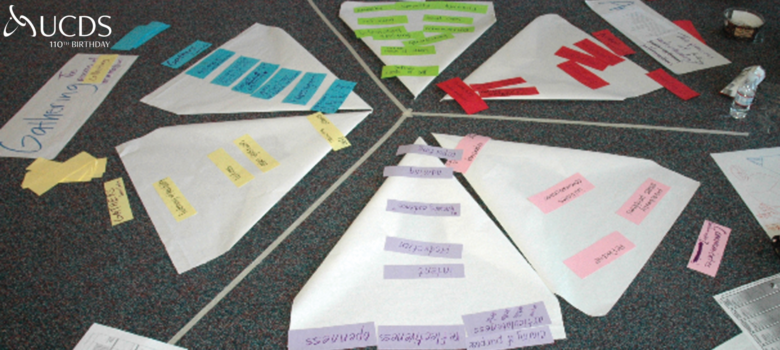by Aana Vaghani, Resident Teacher
The IB learner profile in action: A mindful journey of pre-schoolers
As humans we are hyper-reactive to social cues in our environment, and nowhere is this more true than in the early elementary. For so many three, four and five year olds, Early Elementary is their first tryst with the social world with norms, rules and thinking beyond the boundaries of the self. The transition from home to school life involves adjusting to a plethora of academic expectations; following a schedule, reading, understanding and abiding by the rules and regulations of an activity or assessment tool. But more integrally, it involves expressing what you need in a way that is cognizant of the way it might be perceived by, or affect others. It involves expressing discomfort or uneasiness while still thinking about the comfort of your newly forming peers. It involves seeking help and coaching from your most intimate adult relationship at school: your teacher, while still regulating how much help is too much help. In such demanding times the tendency to react seems pretty natural.
As teachers, it is in our best interest to build a classroom environment that supports self-regulation, and mindfulness of others needs and wishes to support the socioemotional development of children. As Young(2018) suggests, mindfulness practices do not only help initiate emotional intelligence at an early age but also shape their minds in a way that supports growth of their mindful muscles such as the prefrontal cortex. This supports humans to act from a place of tolerance rather than reactivity.
The Early Elementary classroom at UCDS is abundant of a pro-mindfulness approach to development. The class meeting is exemplary of guiding children to facilitate a conversation about issues that concern us all as a community. The facilitator listens carefully until he or she hears everyone is observing a moment of silence and then calls the class meeting to order. After turning to the class meeting agenda written by the members of the classroom community, the facilitator will then lead a meeting where a group of children listen to ideas of other children, and build off of these ideas a creative solution to an issue. This itself creates a community conducive to the codes of behavior we strive for as learners, as caring human beings.
Problem solving too, uses the crux of a mindfulness approach to encourage children to a mindful minute where they think of what they may have felt or what a friend felt that lead to the problem. Instead of focussing to solve the problem as an instant fix, this encourages children to analyse what the “intention” of the problem may have been. Having looked back at their own intentions, we ask children to put themselves in the shoes of the person they are problem solving with. How did he or she feel in the moment that may have lead to the problem? This creates not only self-awareness, but also awareness about others in the environment, as a way to foster empathy which is so essential to socio-emotional development. In those heaty problem-solving moments, class-to-class transitions we always encourage they take a minute to “smell the flowers” and “blow the candles” to inhale, exhale, pause, and enjoy their first steps into the world of school and new connections- an experience we are so lucky to witness.
One of the most chaotic, energetic, intellectually stimulating times of the school week is when we experience math come alive with the children’s weekly dose of Math Vitamin. Through manipulatives, stories, colors and patterns, we find a way to squeeze in the essential potion of mathematics into the lives of three to five year olds. And the process is incredibly rewarding. We “prescribe” Math Vitamins with an intention in mind about getting across a math related strand; be it pattern, number sense, addition and multiplication. But how far children go with each concept is not only child-related and individualized, but also open to their own interpretation. We build our instruction based on the responses we get from children on these Vitamins. The first thing we started with this year was “tracing” the wings of birds using Math manipulatives—colored rods. We initially drew out a bird body and asked children if they needed help drawing out wings, but then realized that the wings children wanted to make out of these manipulatives went far beyond the scope of an A4 sized paper. So we built wing “charts”; sometimes adding many pieces of paper to either side of our original handout. And we built wings stretching out in both directions, adding colored rods, and they had so much fun knowing that they had essentially designed wings for these birds. A follow up activity was building wings for themselves, which of course they were excited to try out at a “bird flying” investigation on Friday of that week. A fun way to learn about the core or the consistent repeating element of a pattern, was to add different types of math manipulatives to make a pattern—some of which prolonged to both sides of our classroom. At the EE this Math Vitamin approach extends to more than just purely math time. At end of the day circles, we often play games like “Guess the number on the hundreds chart” where students themselves have the agency to think of a number and their classmates guess what number it could be. Each guess is followed by the student striking out all the numbers that this number is “less than” or “more than”; until the scope of guessing gets smaller and smaller. As you can imagine, the end of this game feels rewarding and exhilarating as the children feel a sense of agency from guessing the number, and the number thinker feels so proud. Everyone feels a mastery over Math Vitamin!

